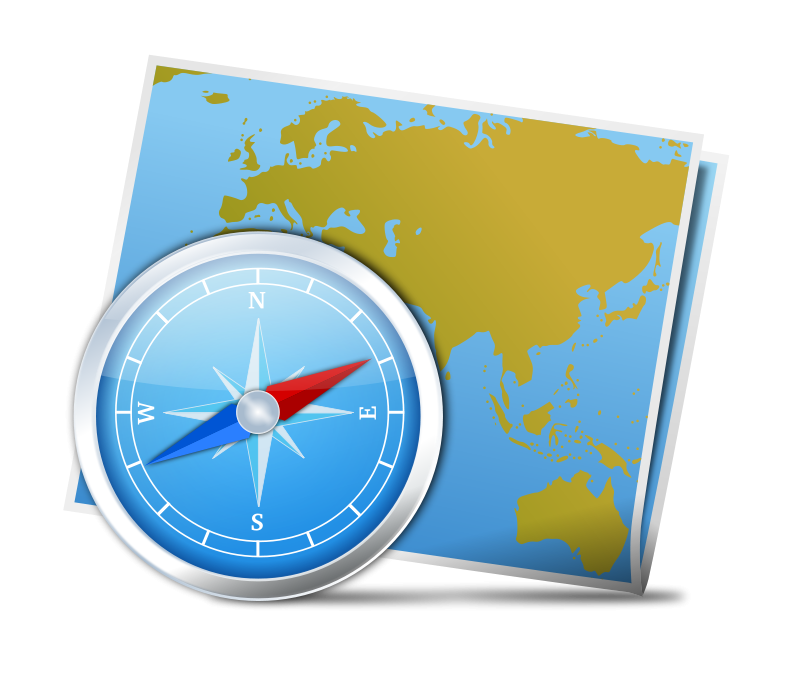Apia
I originally landed in Samoa at 3am local time and about 6am by my body clock. It meant it was dark as my taxi took me from the airport into town, but the ride was an experience in itself. The car itself was a very old Japanese model, with every wheel bearing singing along and the driver never going above around 25 MPH, even slipping the auto box into neutral any time we came to a slight downhill gradient. We were getting passed by every other vehicle on the road, but even our slow progress didn’t seem to stop the driver struggling to spot where the centre line was as he drifted across the road.
Later that morning was a shock to the body as it felt the heat and humidity. Just strolling around had me breaking out in a sweat and I was becoming worried how I’d cope with a few weeks of this. Its not always safe to drink the tap water, but bottled water was readily available; handy when you’re getting through 3 – 4 litres of the stuff a day.
I was spending my first few days in Apia, the capital of independent Samoa, on the island of Upolu. My hotel was near the main market and bus station, just across a little stream and about 5 – 10 minutes walk from the sea front. My first stroll made it clear I was no longer in the 1st world. The little stream was opaque, dark grey and stank, yet in the rest of my time in Samoa it appeared to be the only one polluted. The market was fairly basic with stalls laid out on low benches and a series of food stalls selling fried foods at one end. Around the main covered market space were a series of “shack” shops selling manufactured essentials such as toiletries, coke, corned beef and beer. Of the produce on sale in the market I didn’t recognise a thing.
On continuing into town it appeared the Samoan’s also didn’t believe in street signs for road names or the direction of destinations, however as there were few main streets you could navigate around using the map in the Lonely Planet. The town itself is fairly spread out with virtually no buildings over two stories high and most of the commercial buildings being on a couple of blocks parallel on Beach Road. I needed brunch so headed to a place used by the locals called Pinati’s. The aversion to signs continued here with no name on the outside of the building and no menu on the inside. There wasn’t a lot of selection, either chicken curry or chicken chow mein, but the chicken curry and a 1 litre bottle of Sprite only cost me $5 Tala (£1). Only then did I discover that they didn’t bother removing the skin & bones from the chicken.
A walk further round Beach Road showed a town with an appealing worn in look, lacking the neon, plastic facade common in the west. The main government building was the biggest in town (donated by the Chinese) but the most dramatic was the Catholic Cathedral.

Just south of town is Robert Louis Stevenson’s last house, Vailima, built in 1890 and where he died in Dec 1894 from stroke probably caused by the TB he suffered from. RLS was a activist for Samoan rights and self government, which made him very popular amongst the local chiefs, less so amongst the Europeans. The house itself is beautifully set in tropic gardens, with Mt Vaea rising behind and it is at the top of this mountain that RLS is buried.

My motel also happened to be near JT’s Sport Bar, run by the family of Junior Tonu’u who played for Western Samoa and for the All Blacks, so I’d found the ideal place to watch the rugby world cup. It was here I met Paul & Willem; Paul from the east end of London and heading round the world and Willem from Amsterdam doing the Pacific Islands. We’d meet up most evenings to catch the rugby and with the Samoa vs England game coming up that was important, however on the big night things went wrong. The atmosphere leading up to the game was electric and only got better as Samoa took the lead, however I’d had a minor stomach complaint for the past couple of days which decided to get much worse. I had to head to my room part way through the 1st half and missed the rest of the game. Still, it got me away from people telling me how badly Scotland had done against France and away from one of Willem’s brighter outfits (he must have been colour blind).
I decided to head out to what was said to be the best of Samoa’s beaches on the south east coast and as they would be moving on said goodbye to Paul & Willem. There was a bus service to where I wanted to go, however I couldn’t get hold of a bus schedule as the local tourist office had run out and despite repeated attempts never had any in. Conversation with other travellers made it clear that the place was a much use as a chocolate teapot. Hanging out at the bus station showed that any bus schedule should only be taken as a very rough guide at best with the driver deciding when to go based on whether he has enough passengers. If numbers are a bit low he will shuttle between Apia’s two markets until he is sure there is no one else interested. The bus itself tends to be a Japanese truck with a wooden seating area built over the chassis and simple wooden benches inside. Peoples shopping will be distributed all over the inside, underneath the front seats if room, but in the case of a load of cement as a raised floor. The driver will know everyone along the route making small diversions all over the place and in one case stopping to pick up a parcel of fish and dropping them off at a house further up the road. A Samoan bus ride is definitely a must for any traveller to Samoa.

Lalomanu Beach
The ride down to Lalomanu was gorgeous with the road initially following the north coast. Here we were passing through lots of small villages, many decorated with brightly coloured plants and rocks lining the road. In between was road with lush vegetation on one side and a tropical lagoon on the other. The road then turns in land and I got first sight of how lush this tropical island is; everything is green, absolutely everything. Where are other places I had been, the hills get bare towards the top, not here.

The beach was almost the perfect tropic beach, with a shelter lagoon out to around 50 m where there was a coral reef surrounded by fish. The beach itself was lined by palm trees and as it was now past the main season there were very few people there. By the second day I had the place to myself and was enjoying a bit of piece and quiet with some swimming and snorkelling, however two things slightly spoilt the calm. First of all I managed to sunburn myself whilst snorkelling and secondly the night before a 4 piece band had played through dinner and tonight I was eating alone. I really did not want to be the sole diner with live entertainment and fortunately they thought the same way. It was quite an experience to have somewhere that beautiful to yourself with so little to distract you and the only sound at night being the roar of the waves breaking on the reef.
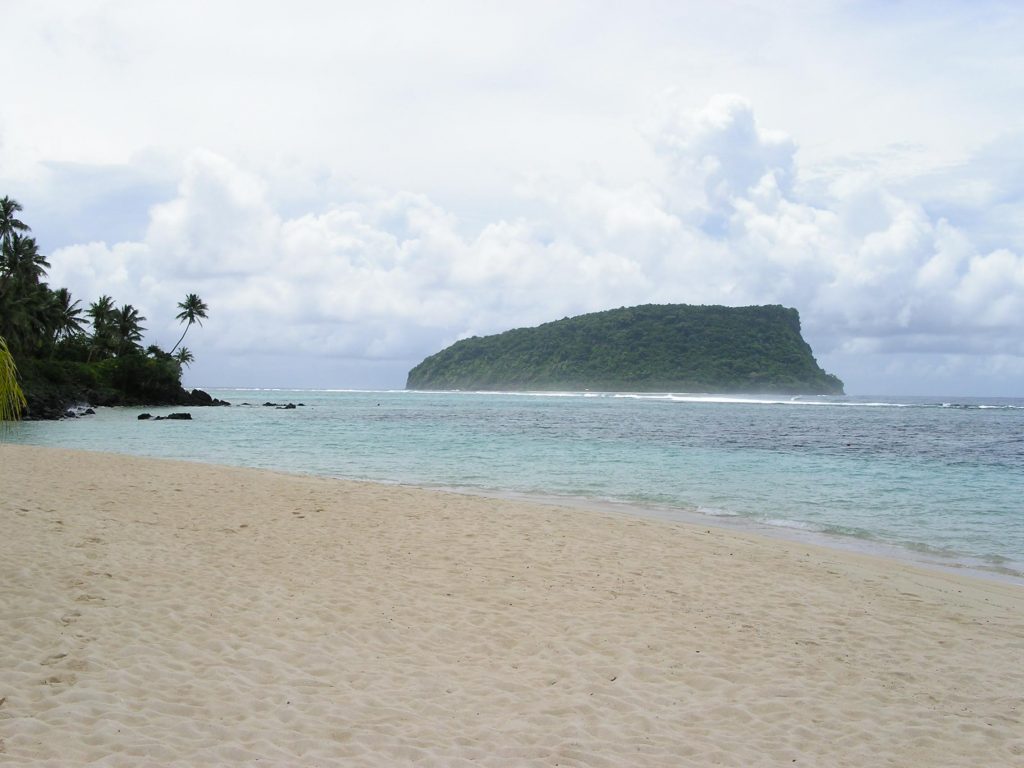
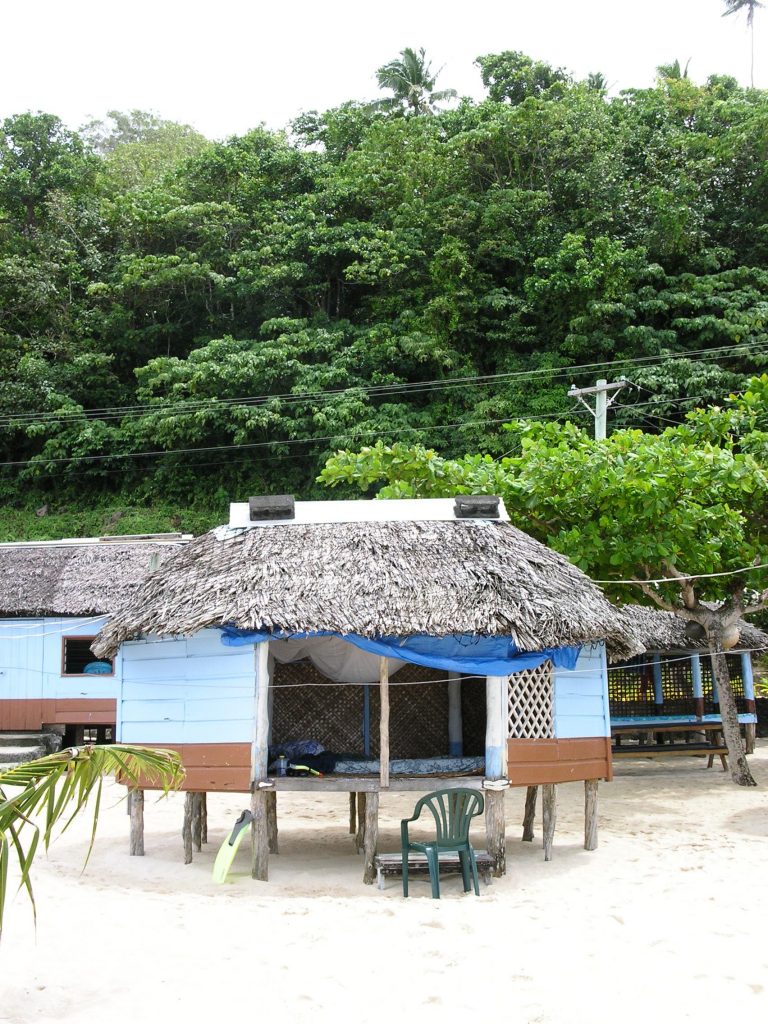

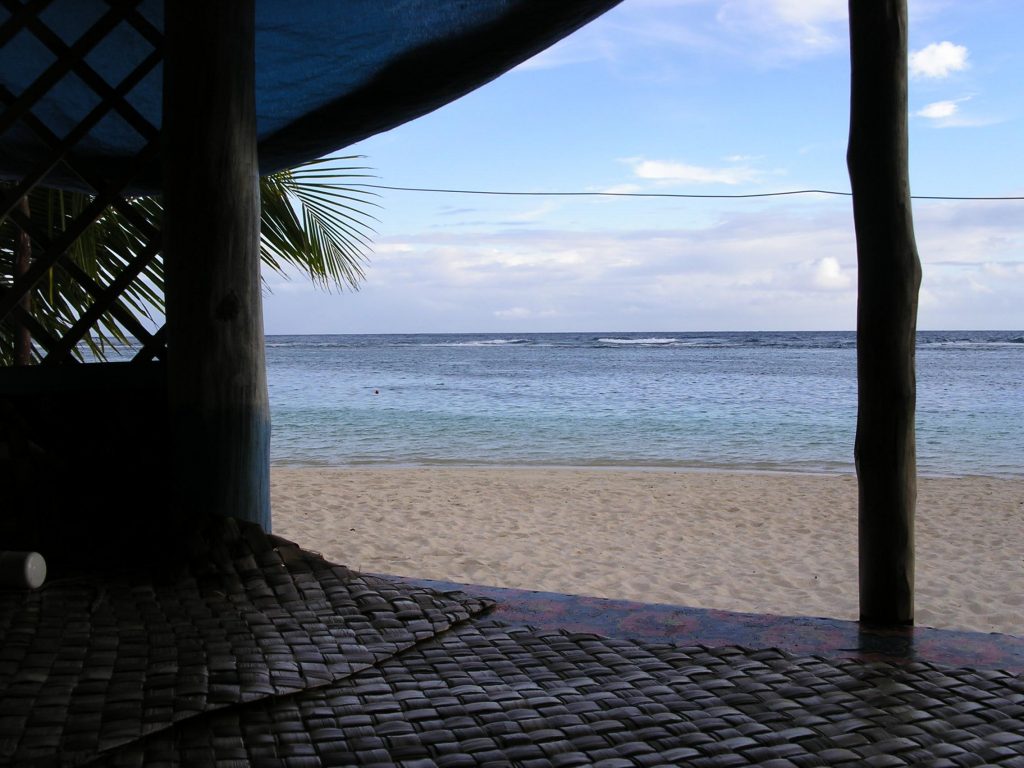
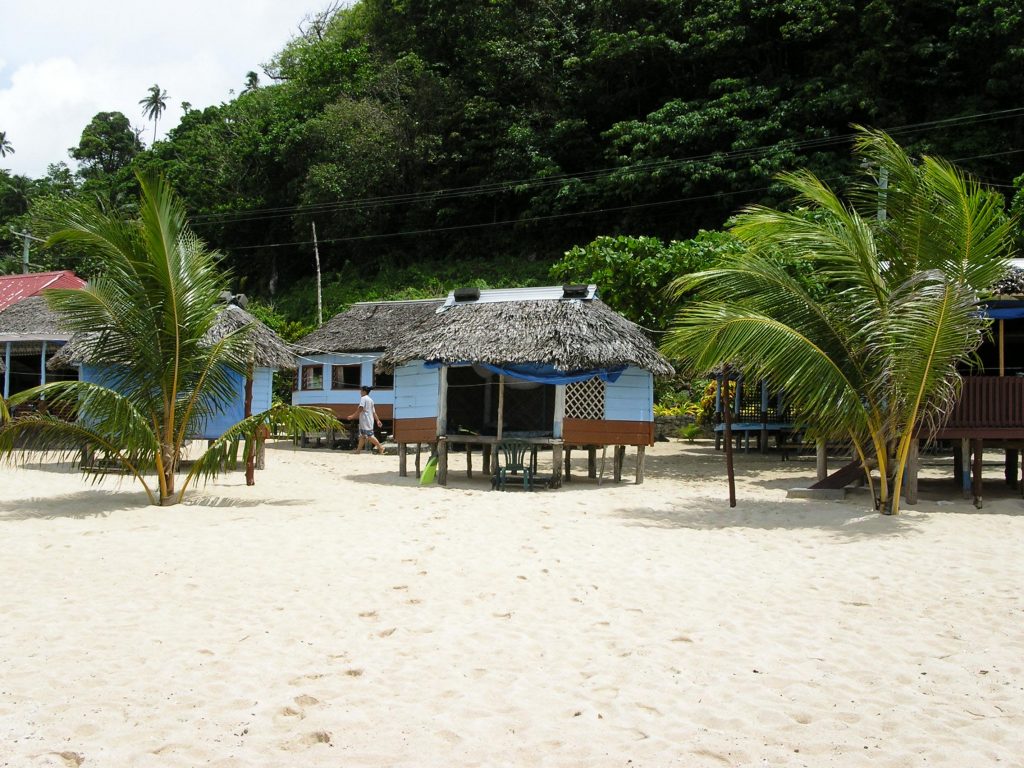
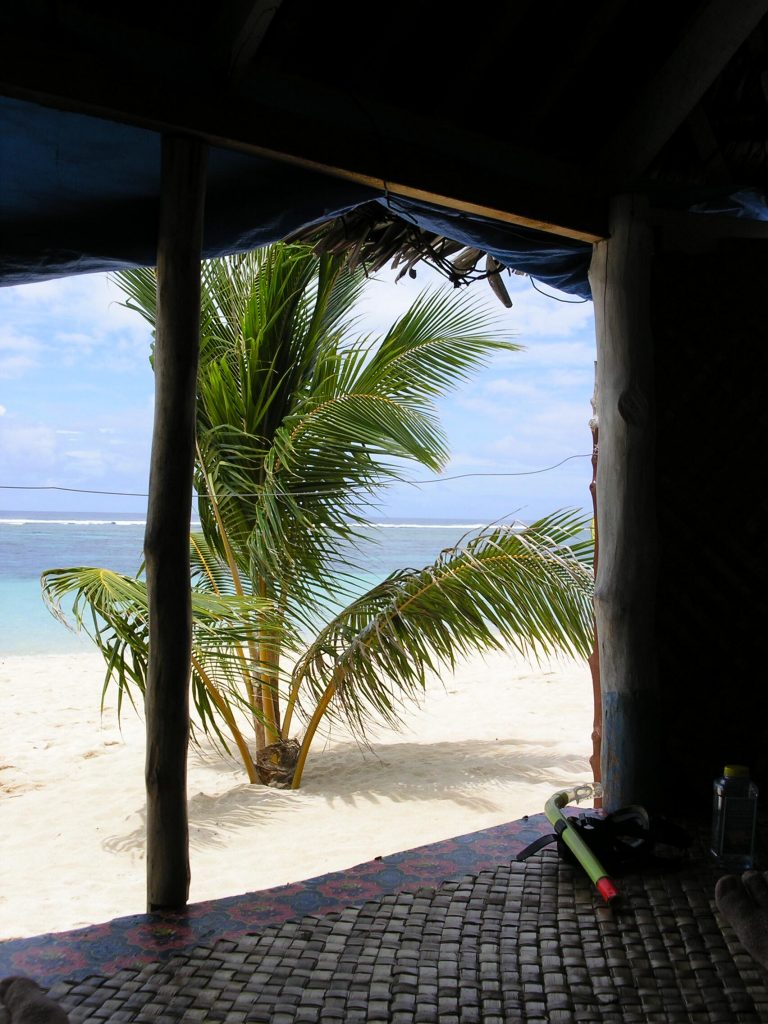
With time on my hands I double checked my flight out of Samoa and realised some bad news; whilst I thought I had 3 weeks here, in shuffling dates to book available flights I actually had 2 weeks 2 days, 5 days less. It meant I had to get a move on if I was to get to Savai’i, the largest island of Samoa.
Whilst I sorted out my arrangements I stayed at a family run hotel in Apia called Aniva’s Place. The father of the operation, Bob Slater, is Scottish but moved over this way a couple of decades ago. Also staying there were Lysa & Karen, who I had met at Lalomanu and had recommended it to me, and a couple of Kiwi businessmen who travelled regularly to Samoa. Always a good sign to see people returning to a place and so it proved, with drinks out front and Bob’s Sashimi to snack on. The only quirk was being told that I couldn’t bring back any girls (or boys) I pulled on a night out!! Apparently all to often the (un)lucky guy wakes up to find the partner gone, along with his wallet and anything else not nailed down. The hot showers more than made up for any unexpected rules that my history said I was unlikely to break anyway.
Savai’i
You can either fly or go by boat to Samoa and I originally planned to take the cheaper sea route, however people said the view was spectacular from the air and the return ticket was only 100 Tala (£20). The flight to Savai’i goes from a tiny local airport near Apia and the plane itself is a little twin engined one, taking only 8 passengers. You know the plane is small when they weigh you as well as your luggage.
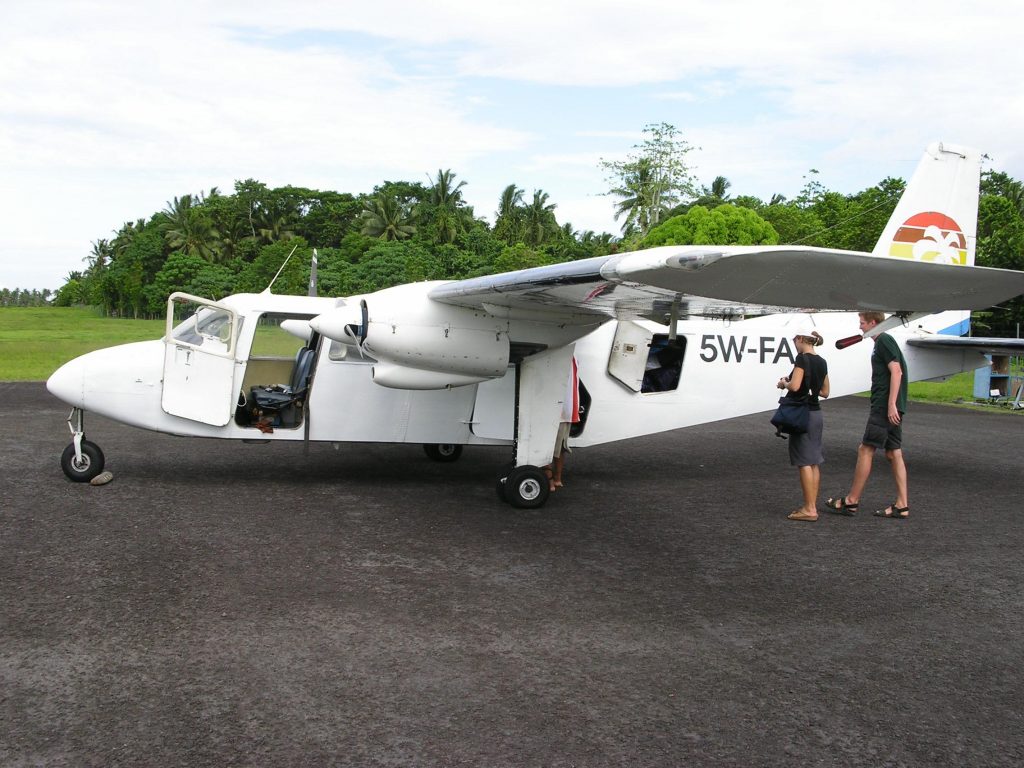

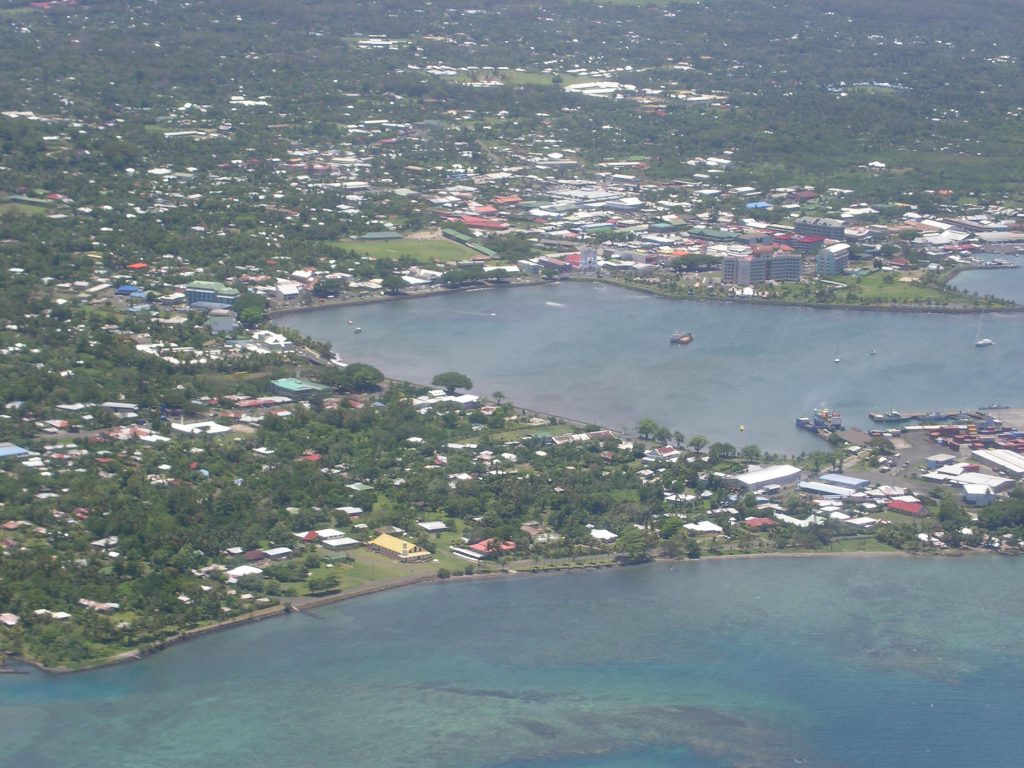

Once there I headed for a family run hotel that also ran tours that had been recommended to me. The hotel was basic, but good with my own enclosed, ensuite Fale in the gardens and a central area where meals were eaten together with some of the family. The head of the family, Moelagi Jackson, is the holder of several chiefly titles, was one of the first to recognise the potential of tourism on Savai’i and is a very forceful and interesting lady. Her son, Chris, was doing much of the running of the hotel whilst I was there and got married on the Sat night with the guests invited to the reception.


During the days I would be out on tour with Warren Jopling, a retired geologist that has spent the last 25 years on Samoa and knows Savai’i like the back of his hand. You couldn’t hope for a better guide to a volcanic island that geologically is very young and still erupts every 150 years or so. We toured over places where the sea has undercut fragmented rocks creating bridges & blow holes, saw sections of the coast as it was thousands of years ago and a huge area of the latest lava flow that looked like something from another planet.

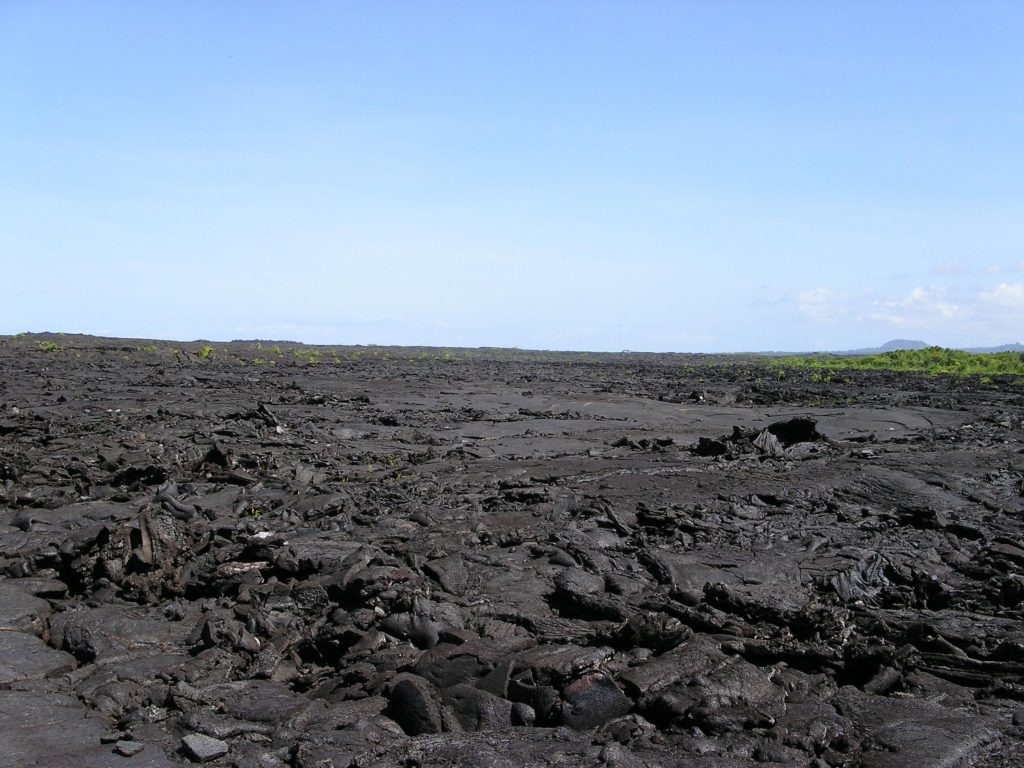


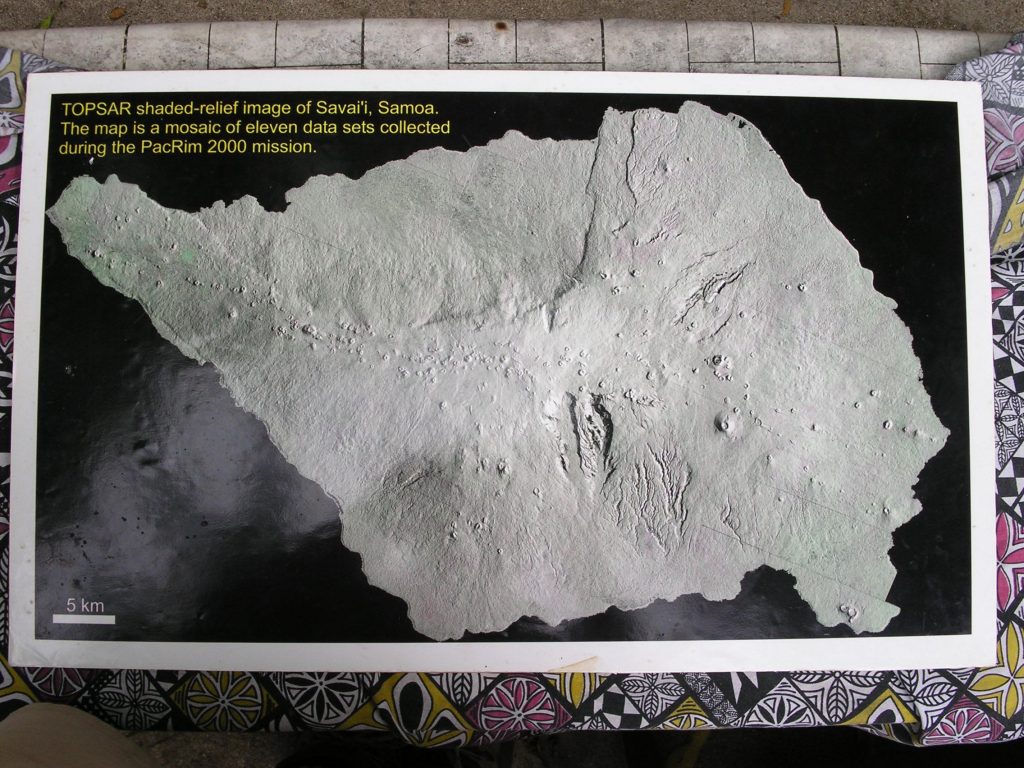
We also got to see some of the local sights. The Pulemelei mound is a large flat topped pyramid 60m by 50 m at its base and rising in two tiers to 12m high. It has recently been archaeologically surveyed and appears to come from the time of the Tongan occupation, however its use is still unknown though various theories have been proposed. There is a smaller mound just to the north connected by a causeway, but the causeway does not lead to an access point on the mound which sit in the middle of the east & west sides. My own personal feeling is that this was for defence as it gives a big advantage to those who occupy it and it has a commanding view down to the sea.
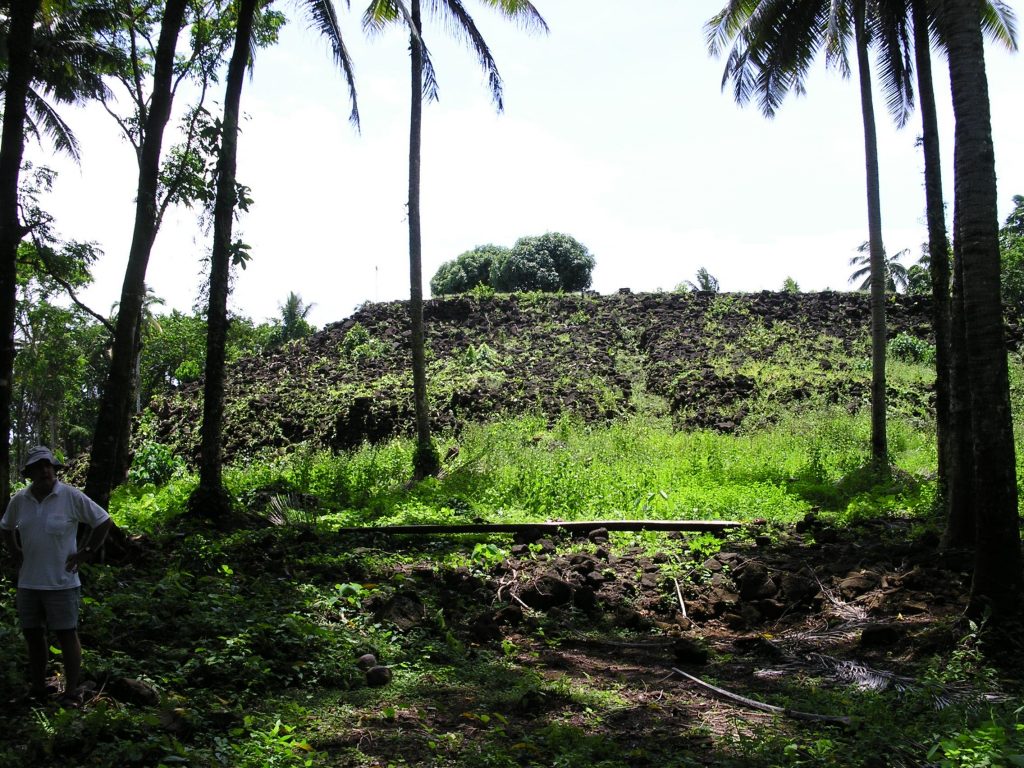
The nearby Olemoe Falls were gorgeous with a fantastic swimming pool at the bottom reachable only by a rickety ladder. As we had a wedding to attend we didn’t get a chance for a swim but this was a hint of paradise. At the very tip of the south east is the Tafua volcanic crater. We climbed up to this to see the crater now filled by jungle and populated by flying foxes. The sight was spectacular but there was no way to take a decent photo
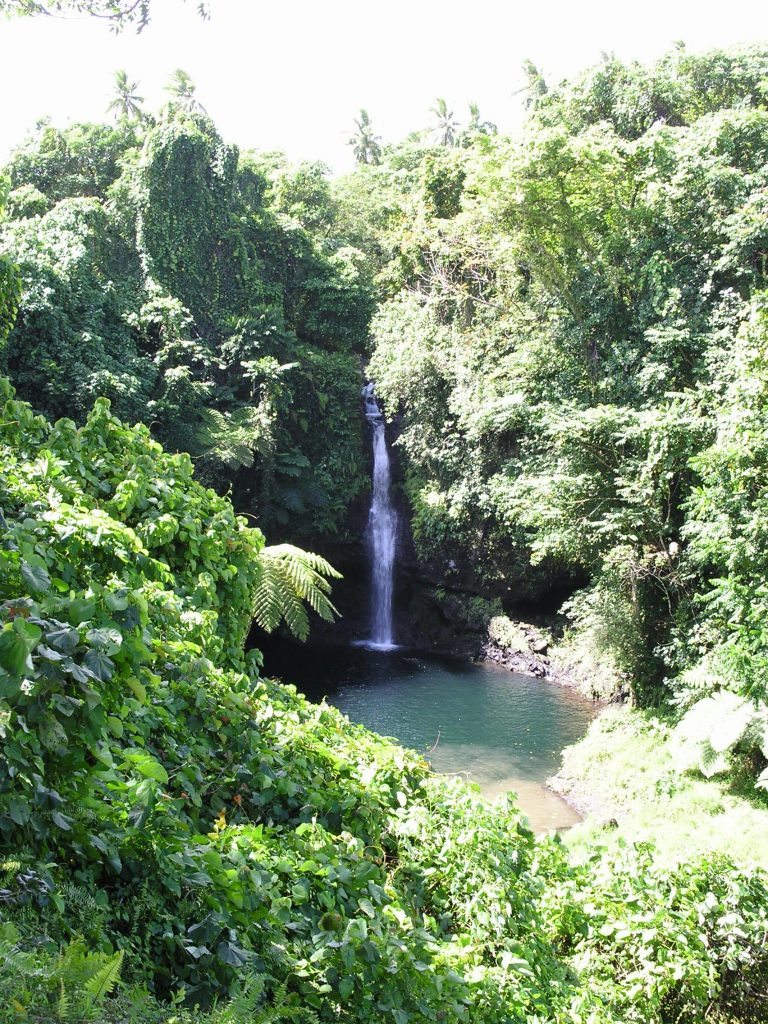
We also got to see some of the local culture & crafts. Siapo is a local material made from tree bark, where the bark is peeled off the wood, the outer course layer peeled off, the living layer scraped off before pounding it out with a mallet. The dried sheet is then patched and stuck to a 2nd layer before being decorated. Its a very labour intensive process that has almost died out since the introduction of cheap cotton materials.

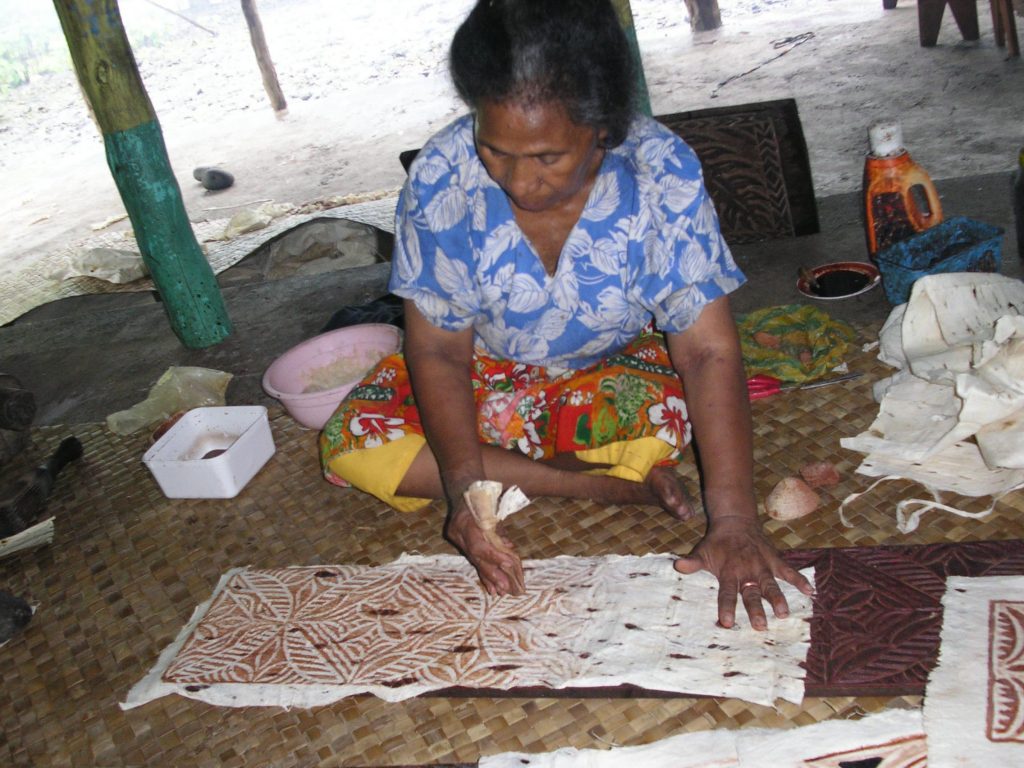
We also stopped by a fale where the family were roasting their own cocoa, which when ground they add to water and sugar to make a drink. It was clear the family lived in a very basic set of circumstances but the kids loved being able to see themselves on the camera after this photo was taken.
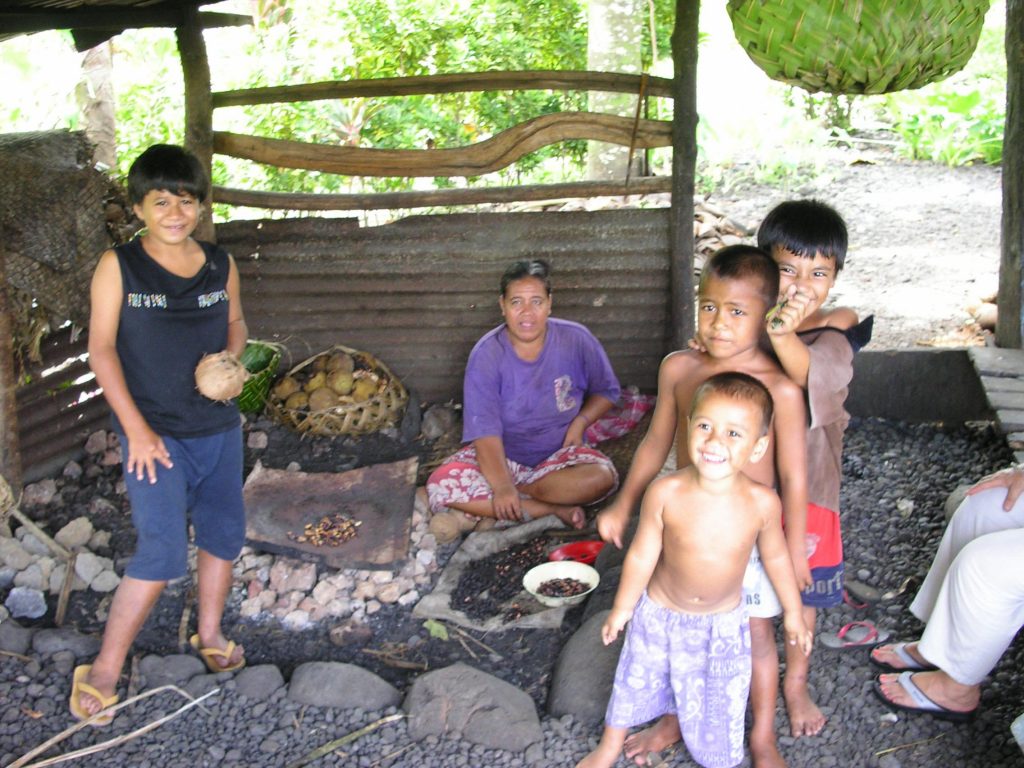
On Sunday I was able to help (or hinder) the preparation of Sunday dinner in an Umu. The Samoa Umu is an above ground hot rock oven where a fire is prepared to heat a set of rocks. When this has burnt out the rocks are spread into a disk and food is then piled on top. Coconut leaves are then placed over the top to seal the heat in and let the food cook. All the food is from local produce: taro a root vegetable roasted, pork (the hotel has a farm), fish, taro leaves cooked in coconut cream… Even the coconut cream is produced fresh by scraping out the coconut flesh then wringing it out in long fibres from the coconut husk. Everything is done using basic tools and nothing much appears to have changed in decades.
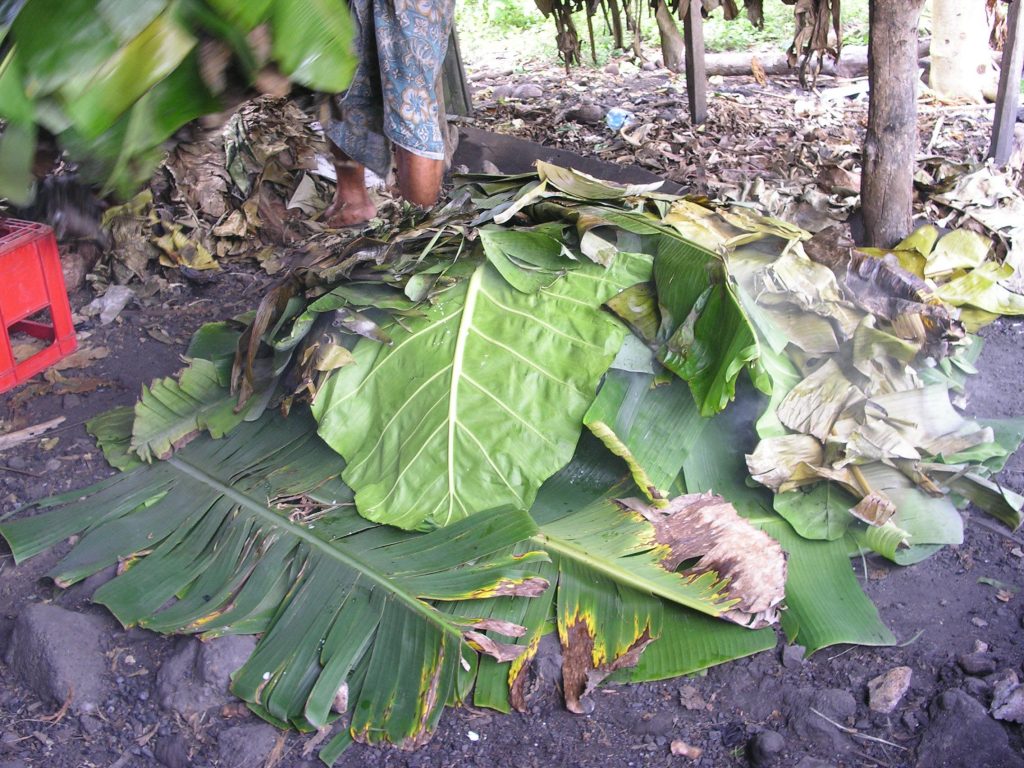
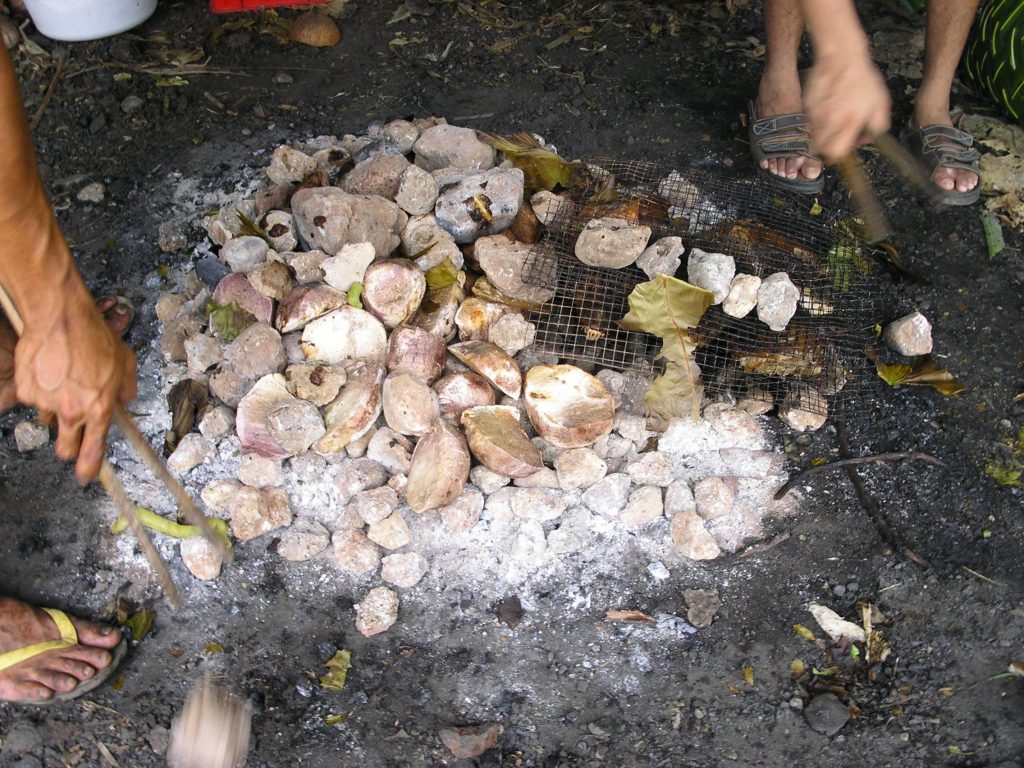
I had one trip to Salelologa, the largest town and ferry port on Savai’i, and found a small market place, a small mall with about 8 shops, a taxi rank with a BBQ and little else. It clearly demonstrated how undeveloped this island is which is a large part of its appeal to visitors. How it copes with the cyclones (generic name for hurricanes) that hit the islands every so often (the last two being in 1991 and 1992) wiping out villages and roads I don’t know. Attempts have been made to bolster the coastline with rocks but as Warren observed these will just add projectiles to the mix when the waves come crashing over. In addition Savai’i can expect a volcanic eruption sometime in the middle of this centuary but exactly where and when it is impossible to say. The last few wiped out land and villages but didn’t kill anyone as they weren’t explosive and people could evacuate areas in the path of the lava.
Samoan life
What did surprise me about Samoa was how little fish appeared to be eaten. More was still eaten than in the UK, but I had expected it to dominate the diet and it didn’t. What was common was lots of fried foods such as chicken, chips, donuts, etc. In addition dishes with a chinese influence were common such as chop suey and curry. Supermarket shelves seem to be dominated by corned beef and spagetti in tomato sauce. Fruit was always served as desert with papaya dominating, however despite being told that citrus fruit was common and available year round I was never offered any nor saw it in any of the markets. You can maintain a healthy diet here but it is a challenge.
For beer fans its worth noting that Samoa’s local brew, Vailima, is pretty good. The brewery used to be owned by a German firm and it shows but its recently been bought by the company that brews Fosters and early signs are not encouraging. Vailima is still its distinctive self but whilst I was there the brewery release Vailima Gold which was much blander. Hopefully it won’t succeed too much.

Religion is also something that stands out as being particuarly important here with many different christian churches established. Every village has a church with the next biggest building being the minister’s house and there is a certain irony in that it was British missionaries who brought christianity here in 1830 and since then the British church has declined in influence at home. At lease one of the churches reads out the donations made by the congregations at the end of the service, putting great pressure on people to donate more than they can afford. At least one of the villages hit hard by the cyclone is building a huge new church that will leave the village in debt for decades and another used money donated by Sweden for rain forest protection and local facilities (schools, medical establishments) to build a grand new house for the minister. The wealth and status of the churches here stands in sharp contrast to the basic living conditions of the majority of the people and reminded me of the period of history in Europe when the cathedrals were being built.
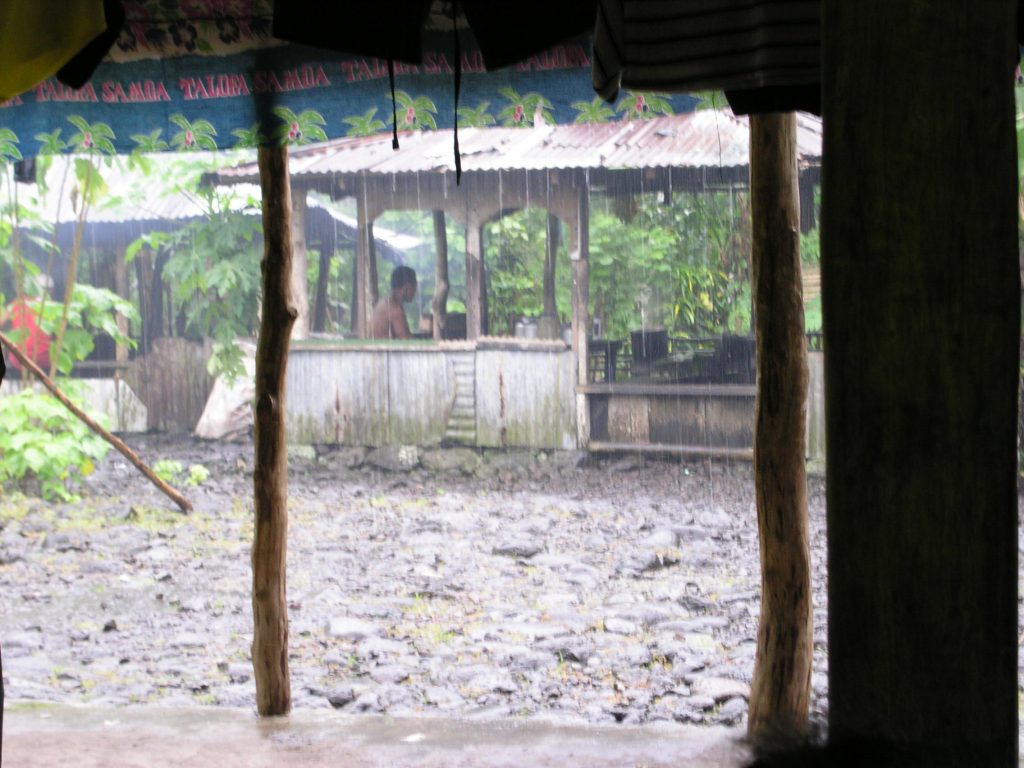

I headed back to Apia a day and a half before my flight to New Zealand to make sure no problems could make me miss it and it was lucky I did. My last day in Apia saw torrential rain which grounded the inter island flights and winds that stopped the ferries. It was a day to settle back and read a good book, but a shame I couldn’t do more with my last day there. There was still much to see in Samoa, I had the place to myself and the 3 weeks I had originally planned would have been perfect. Its a place I’d like to come back to but its a long and expensive haul from the UK.
